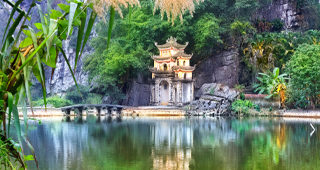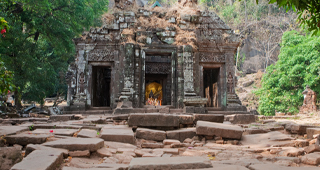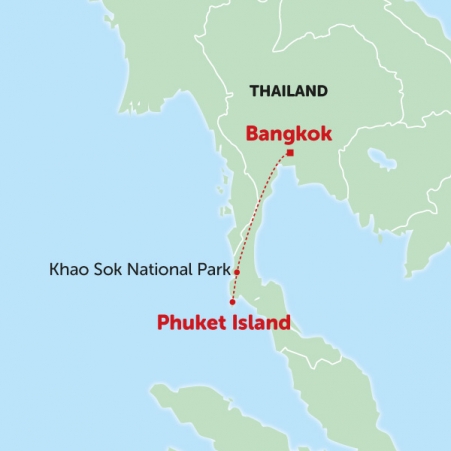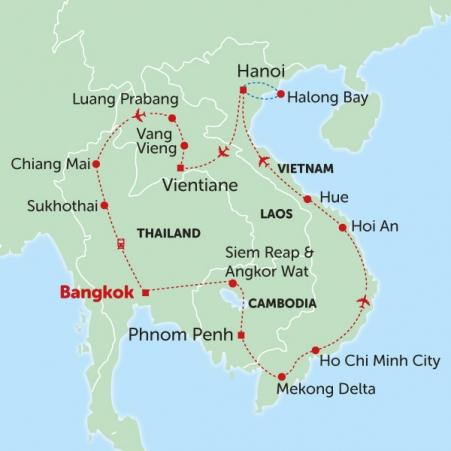Book NOW for $1 £1 €1 • Flexible Payments • No Change Fees • Private Departures Available
- Home >>
- Siem Reap City Guide
Siem Reap City Guide
Nestled in the northwest of Cambodia, Siem Reap is unanimously popular with tourists for one glaringly obvious reason - Angkor Wat. Sat on the doorstep of the magnificent Hindu temple complex is a town that was no more than a humble village until a period of development during French rule in the 19th century. Like much of what was once Indochina, reminders of a European presence can be found amongst the undeniably Asian streets of Siem Reap. The city is always teeming with excited tourists thanks to the world-renowned ruins to its north, making for an extremely tourist friendly atmosphere. Amongst Siem Reap’s cosy alleyways and colonial buildings are restaurants serving all manner of international cuisine, bars with seemingly endless cocktail options and accommodation options of all description. But looking beyond its commercial, expat-friendly facade, Siem Reap is home to a quiet charm that is as characterful and historically significant as the French architecture that lies at its very core.
Trips that visit Siem Reap
Cambodia Highlights
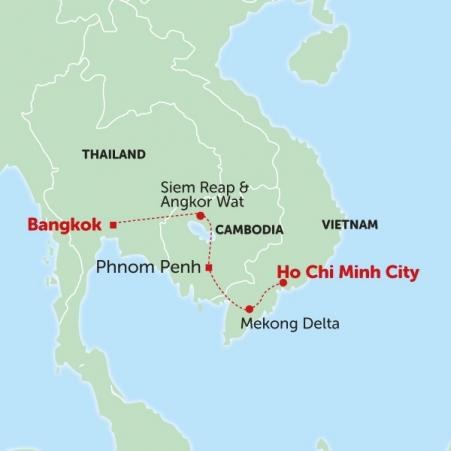
Duration:8 Days
Route:Bangkok to Ho Chi Minh City
Tour Code:ICCH
Cambodia & Vietnam Highlights
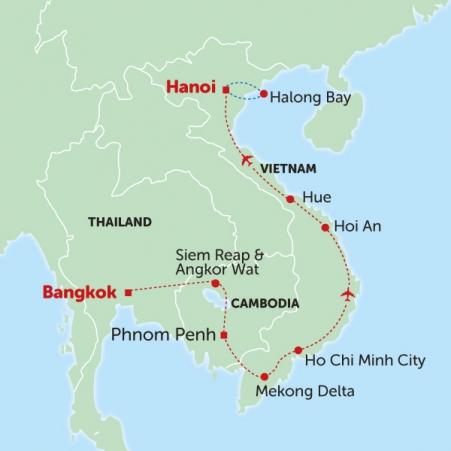
Duration:15 Days
Route:Bangkok to Hanoi
Tour Code:ICCV
Southeast Asia Express
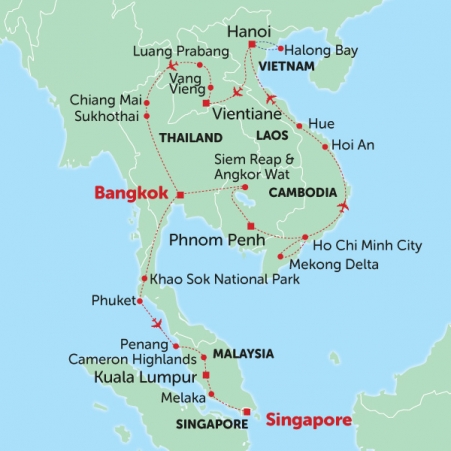
Duration:43 Days
Route:Bangkok to Singapore
Tour Code:ICAE
Siem Reap's Best Spots
Despite the crowds of tourists that flock to Siem Reap on a daily basis to visit the archaeological wonder that lies to its north, a lot of the city manages to retain an almost rural tranquility. The majority of the action in Siem Reap unfolds in the Old Market area that lies near the centre and acts as the city's tourism hub. As you venture out from the area, its traveller-saturated atmosphere begins to wane in favour of neighbourhoods that are more traditionally Cambodian in every sense. Tropical trees line the city streets, becoming denser as you venture to the outskirts, giving the impression of a gradual immersion into the Cambodian wilderness. A visit to Siem Reap can cater to the needs of those that like their home comforts as well as those that prefer a city stay with a greater sense of authenticity.
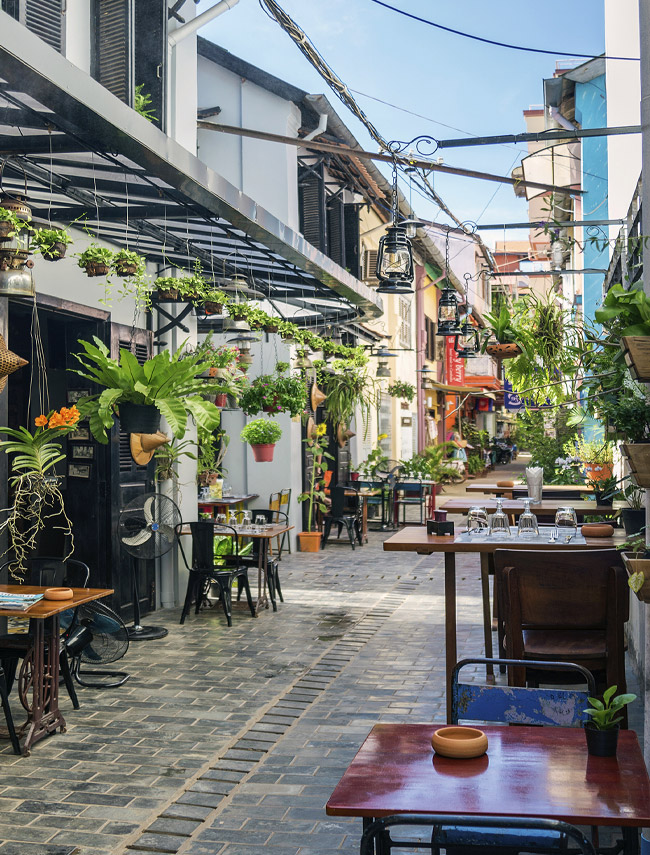
Old Market Area
A combination of traditional architecture that mirrors Cambodia’s rich history and a plethora of multicultural establishments line the verdant roadways and cosy side streets of the Old Market Area. As the name suggests, the neighbourhood is centred around a traditional covered Cambodian market which lies on the western bank of Siem Reap River. The market is a notable draw in itself, harbouring an eclectic mixture of stalls that sell everything from street food and traditional spices to textiles and pirated DVDs. The bustling energy, bright colours and traditional produce give the market an alluring sense of traditionalism as well as an impression of the role of western influences on Cambodian society.
To the north of the market are a mesh of diminutive alleyways that are alive day and night with busy crowds of travellers eating, drinking and talking about the one thing that is on everyone’s mind - the temples of Angkor. Restaurants serve everything from traditional Khmer cuisine to food from Mexico, India and Italy. Running through the centre of it all is the well renowned ‘Pub Street’, along which countless drinking spots can be found serving ice cold beers long into the night. Perfect for battling the stifling Cambodian heat, which rarely dips below 25 degrees centigrade even at the coolest times of the year. The Old Market Area is undoubtedly catered towards the needs of the city’s tourism industry but still retains a quintessentially Southeast Asian charm that draws visitors to its busy streets on a daily basis throughout the year.
Top Tip
If you aren't all templed out after having explored the ruins of Angkor, pay a visit to the fascinating Wat Preah Prom Rath next to Siem Reap River. The tranquil gardens of this temple complex are home to a vast collection of ornate pagodas and often slightly bizarre statues, including a reclining Buddha created using the wood from a boat whose backstory involves a rice-cooking monk and a shark attack on the river... Bursting with the vibrant colours typically associated with Buddhist sites, the complex offers a more modern antithesis to the ancient site of Angkor.

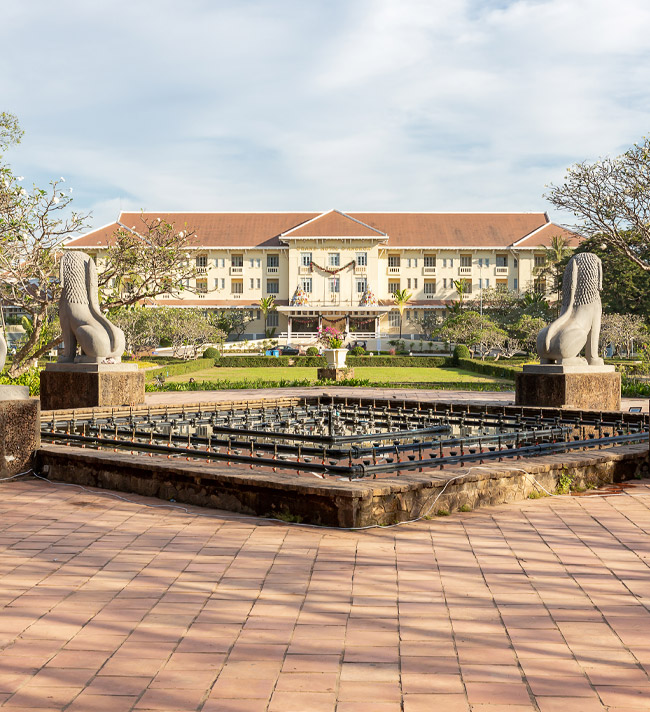
French Quarter
The finest of Siem Reap’s architectural delights are found in the aptly named French Quarter. The buildings in this area have all the hallmarks of any great European structure but inside them lies the charismatic chaos that can only be found in Asia. Running along the eastern edge of the area is Sivutha Boulevard, which is home to a number of restaurants, bars and Siem Reap’s more upmarket hotels. Venturing away from the noisy boulevard, streets become quieter, with verdant greenery bordering the streets instead of noisy bars and western chains.
To the north of the French Quarter is the city’s Royal Residence, a modest villa which serves the King of Cambodia when he visits Siem Reap. Opposite the residence are the Royal Independence Gardens, whose well maintained lawns and wide range of foliage provide the perfect location for anyone in search of cooling shade and a moment's rest from the often manic character of the city. Another peaceful getaway within the French Quarter is the Mirage Contemporary Art Space, which hosts frequent exhibitions, many of which are dedicated to the work of local artists.
Top Tip
Those with a keen interest in doing things ethically will appreciate a trip to Hap Guan Street directly to the north of the hospital. On this small street are a number of cafes and restaurants that are committed to a more ethically conscious way of running their establishments. They serve everything from delicious vegetarian food to revitalising organic coffees.
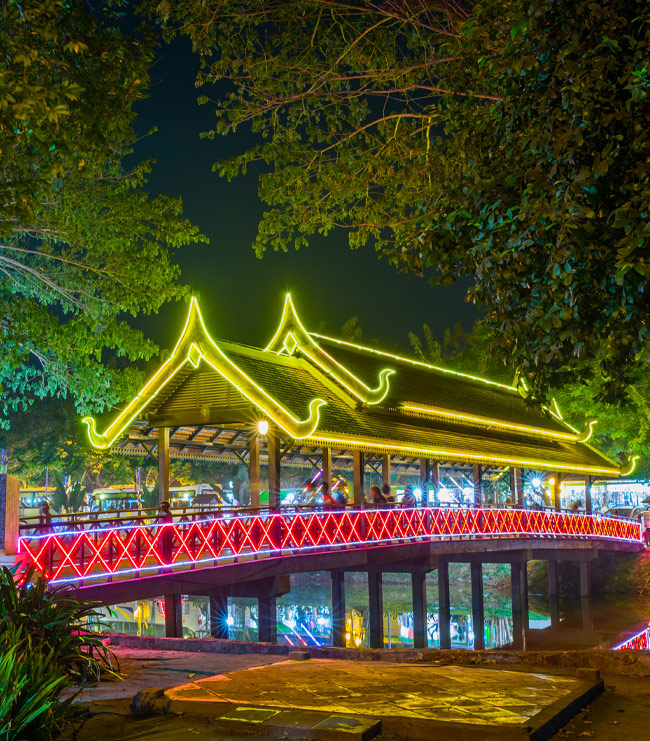
Wat Bo
Those who prefer the idea of staying in a quieter, more traditional neighbourhood should explore the district of Wat Bo to the east of Siem Reap River. The hustle and bustle of the city dies down the instant that you cross the bridge to the eastern side of Siem Reap. Centered around Wat Bo Road, the area is green and peaceful, with less traffic, less tourists and more locally run establishments. The neighbourhood is also considered up and coming by the local residents who often skip over to the river’s eastern banks to sample the contemporary bars and restaurants on offer.
The area gets its name from the eponymous temple complex just to the east of the main road, which is in fact one of the oldest standing pagodas in the region. Whilst Wat Bo Road shares a name with this temple, many prefer Wat Damnak at the southern end of the main street. Within its large green grounds are a collection of masterfully carved pagodas, gold-bordered temples and beautiful tiered shrines. Whilst you may be reluctant to visit yet another temple so soon after a trip to Angkor Wat, it is a serene area that inspires a sense of calm and tranquility in anyone who wanders amongst its numerous Buddhist structures.
Top Tip
Those with an interest in purchasing contemporary Cambodian goods of genuine quality should attend the Made in Cambodia Market, hosted daily at King’s Road, Angkor, on the river’s eastern bank. Unlike many markets in Cambodia, the artisanal products sold are of high quality. There are also a number of westernised restaurants in the complex but, like the market, they will likely charge a little more than more local establishments.
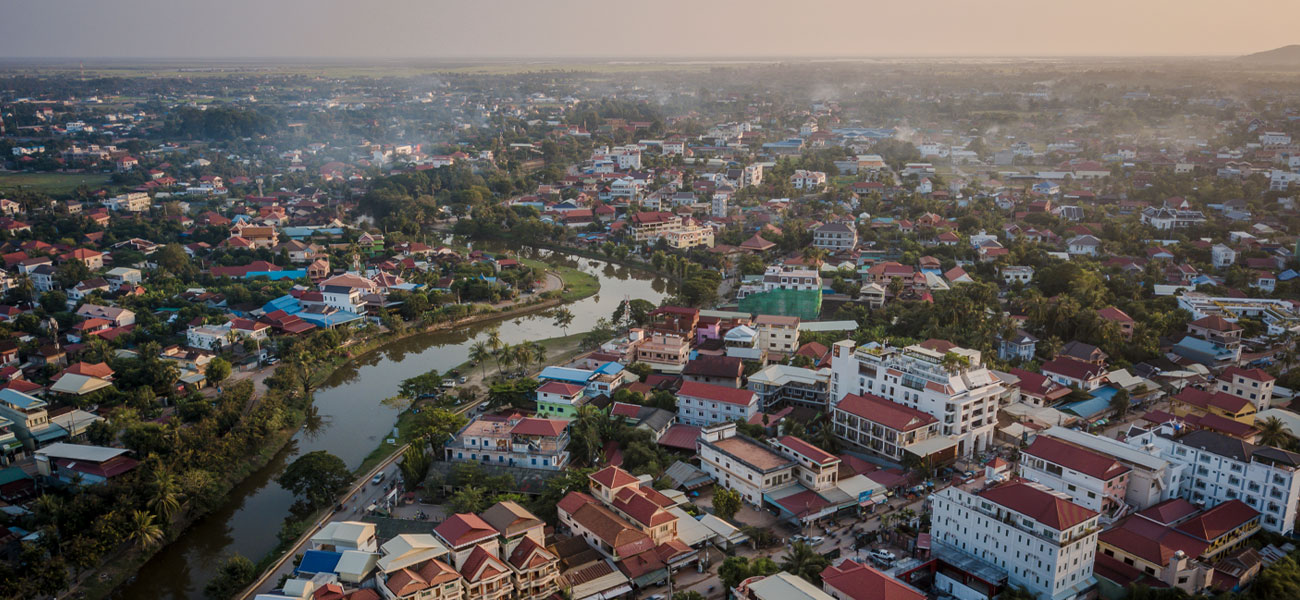
Siem Reap Tailor-made Holidays
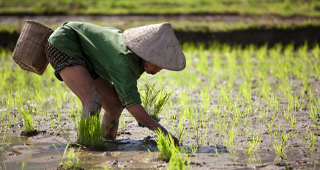
Highlights of Indochina
Duration:19 Days
Route:Phnom Penh to Luang Prabang
Tour Code:TCVL
Food in Siem Reap
Given the influx of tourism that has occurred over the last century in Siem Reap, thanks to the now world-renowned ruins which transformed the sleepy village into a busy city, just about any international cuisine can be found in the streets surrounding Pub Street. However, many of Cambodia’s most traditional recipes are still very much available to buy from the city’s eateries. The streets around the Old Market Area are home to a number of restaurants selling Cambodian classics, but for a more genuine taste of Khmer cuisine, travellers should head to the local eateries found away from the tourist hotspots.
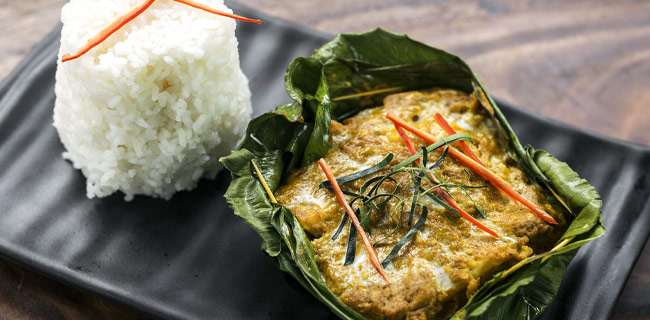
Amongst the dishes typically on offer, the most commonly found is likely fish amok. Often considered Cambodia’s national dish, this fragrant, coconut-based curry is traditionally cooked inside a banana leaf until the fish is flaky and tender, making for a dish that is at once delicate and bursting with flavour. Amok can also be cooked with pork or chicken and is always served with a portion of fluffy steamed rice. Another Cambodian staple comes in the form of num banh chok, a rice noodle dish that is traditionally eaten for breakfast. The noodles are served in a fish sauce and coconut milk broth, before being topped with diced raw vegetables, providing the dish with a satisfying fresh crunch. Another popular breakfast dish is the porridge-like bobor. Whilst its appearance may not be the most appealing, this delicious meal comes in a number of scrumptious flavours, including fish, chicken and pork, and served with an array of toppings such as crushed chillies, lime wedges and bean sprouts so that you can personalise your warming bowl to match your tastes. Bobor is thought to have been served in Cambodia since the 10th century, making it one of the nation’s longest standing dishes.

For a lighter food option, travellers should sample green mango salad, a dish that isn't totally dissimilar Thailand’s famous green papaya salad. Opting for a more delicate flavouring than its spicy Thai equivalent, finely sliced mango is combined with fish sauce and dried shrimp along with fragrant spices and crushed nuts for a delightful savoury flavour. Kuy teav is another popular Khmer dish served throughout Siem Reap. Much like Vietnam’s popular dish, pho, kuy teav is a noodle dish served in an aromatic pork or beef broth, served with an array of toppings, including garlic, lime, coriander and spring onions.
Getting around Siem Reap
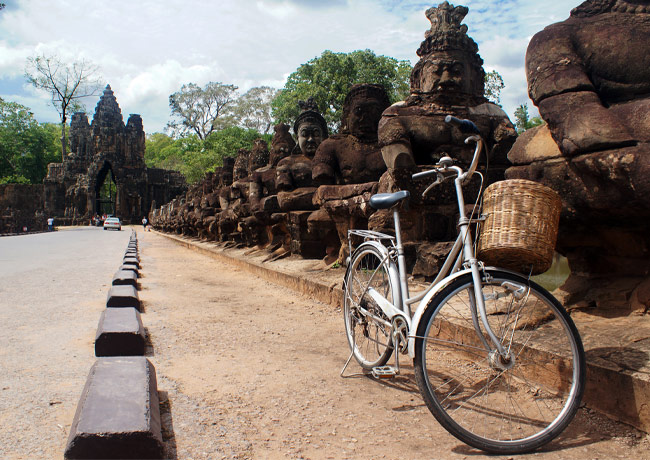
Given that Siem Reap is not an extensive city that sprawls beyond the horizon, most of the time travellers can easily walk from A to B. Those that wish to travel slightly further afield - to Angkor Wat for example - have a small collection of options available to them.
First of all are the classic tuk-tuks, or remorks as they are often called in Cambodia, which whizz passengers to their destination on the back of a rickety three-wheeled motorbike. Relatively cheap and often good fun, tuk-tuks can be hired for a day of exploring the temples of Angkor, where they will wait for you before returning you to Siem Reap once finished. For a similar but more western option, travellers can opt to travel by taxi.
One good option for anyone staying in Siem Reap for a trip to Angkor Wat is to rent bicycles for as little as $2 a day. Angkor Wat is well within cycling distance, as are many other sights around Siem Reap, making this a very convenient and flexible transport option for anyone staying in the area. Just be wary of cycling all day in the blistering heat! A wise move for those who are looking to be on the road for a while but wish to be eco-friendly are the electric bikes which are readily available in the city centre and can even be charged at various points around the Angkor archaeological site.
Group Tours to Southeast Asia
Vietnam Highlights
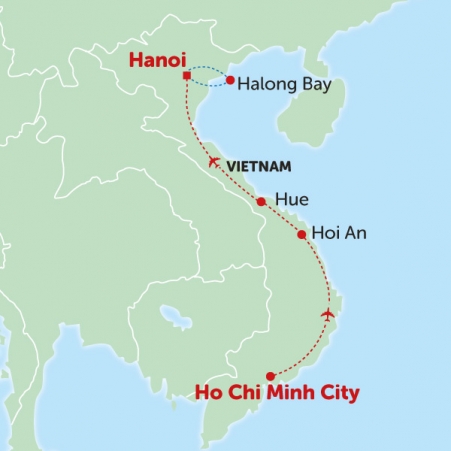
Duration:8 Days
Route:Ho Chi Minh City to Hanoi
Tour Code:ICVH
Alternative things to do in and around Siem Reap
Despite the fact that essentially everyone who travels to Siem Reap does so to see one thing in particular - Angkor Wat - this is far from the only worthwhile activity available in this northwestern corner of Cambodia. As the presence of the famous temples suggests, the area is steeped in a deep and colourful history that has seen Siem Reap develop from a sleepy village to a bustling city over recent centuries. Its historical significance has ensured that fascinating elements of Cambodian culture have remained, waiting to be experienced. Thick jungle, rushing rivers and the colossal Tonle Lake bless the countryside with a natural beauty that often gets overlooked in favour of the main draw of Angkor, but exploring the wilderness is sure to prove well worth your time.
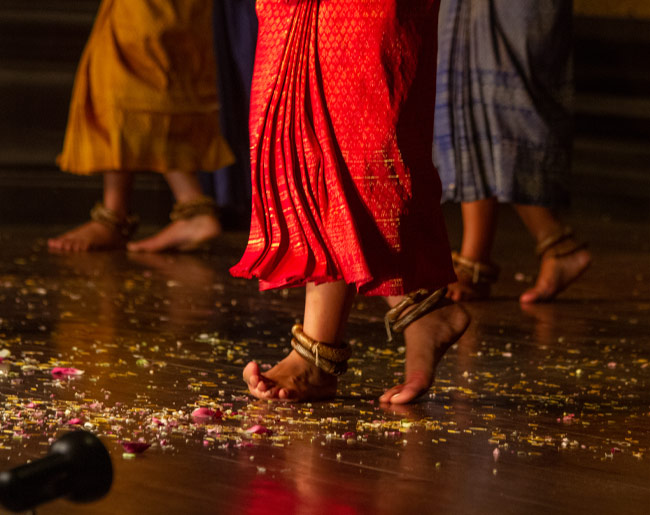
Watching a traditional Apsara dance performance
A Cambodian tradition that dates back to the 7th century, Apsara dancing is a unique and precise dance form that requires training from a young age to master the complexity of the movements that dancers must perform. The dance derives from Hindu and Buddhist legends of beautiful creatures, Apsaras, that descended from the heavens to entertain gods and kings with their hypnotic dancing. Said to have been born of the sea, the Apsara dance consists of fluid movements and flexible hand gestures - of which there are over 1,500. There are even murals of the dance carved into the side of Angkor Wat, proving the significance of its heritage.
The tradition of the Apsara dance was almost extinguished during the tyrannical reign of the Khmer Rouge during the 1970s, when most who knew the dance were killed during the mass genocide, limiting the ability to pass it down to later generations. However, the tradition was lived on through a small collection of dancers and can now be appreciated live in theatres in Siem Reap, such as the Angkor Village Apsara Theatre. The dance is both mesmerizingly beautiful and historically potent. A physical manifestation of the stoic resilience of the Cambodian people.
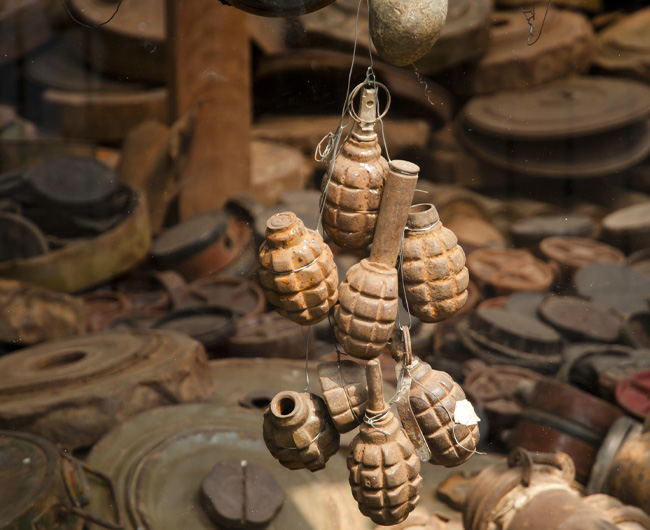
Exploring the Cambodian Landmine Museum
What may seem an extremely niche and potentially obscure focus for a museum in fact tells a powerful story of Cambodia’s fractious recent history and an incredible individual’s personal mission to help heal some of the nation’s scars. Aki Ra was a child soldier in his youth but has spent his adult years locating and diffusing unexploded bombs across Cambodia that remained as an unwanted reminder of the country’s numerous conflicts in recent years. From dud bombs dropped by the US during the Vietnam War to mines placed during the rule of the Khmer Rouge, explosives still litter the Cambodian countryside and are responsible for dozens of deaths each year.
The stacks upon stacks of various weapons of war give a terrifying impression of the country’s devastatingly violent past. However, the explosives are also a respectful nod to the work of Aki Ra and his efforts to clear up what has been a serious issue in modern Cambodia. Funds from the museum have been used to create and maintain an on site home for children who are victims of mine explosions in the area, helping them recover from the horrors faced at such a young age. The museum is located to the north of the Angkor temple complex and can be reached by tuk-tuk from Siem Reap in around 30 minutes.
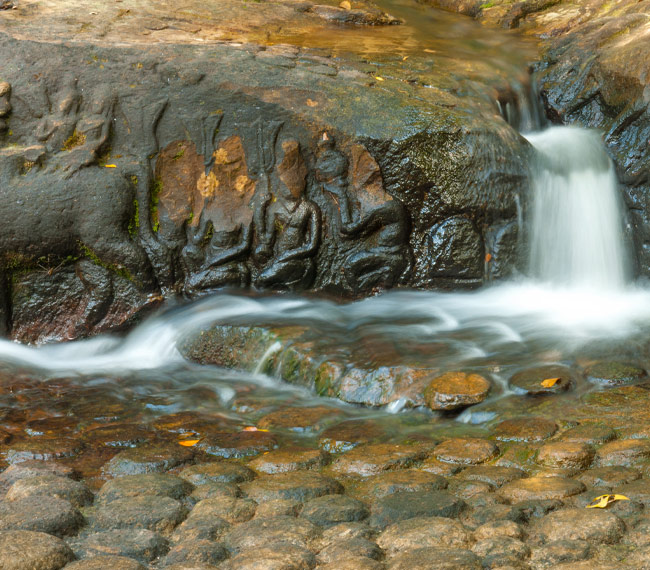
Venturing into the jungle via the Kulen Nature Trails
50km to the north of Siem Reap is the Phnom Kulen National Park, a network of trails running through the Cambodian jungle thicket past a number of fascinating sights, both natural and historical. The chorus of tumbling waterfalls echo through the trees as you approach different sections of the river, adding to the constant chatter of the park’s varied wildlife. The towering treeline is home to a population of Indochinese silvered langur, an endangered species of primate that is endemic to Southeast Asia, who may show their silver-rimmed faces to lucky trekkers crossing their path. Other wild residents in the area include vibrant macaques, numerous reptiles and giant black squirrels.
Aside from the wide array of natural splendour present in the park, it is also a place of great historical significance for Cambodia, being the site of the Angkor Empire’s first capital. Further north, relics from this ancient era of Southeast Asian history can still be seen in the form of Kbal Spean, an archaeological site carved into the very bed of the river. Traditional Cambodian carvings and thousands of Hindu lingam adorn the bedrock over which the river runs in a surreal display that is believed to have been built to bless the water on its way to settlements further downstream. After a day of exploring the Kulen Nature Trails, travellers will have the opportunity to cool off in the river at the base of one of its waterfalls.
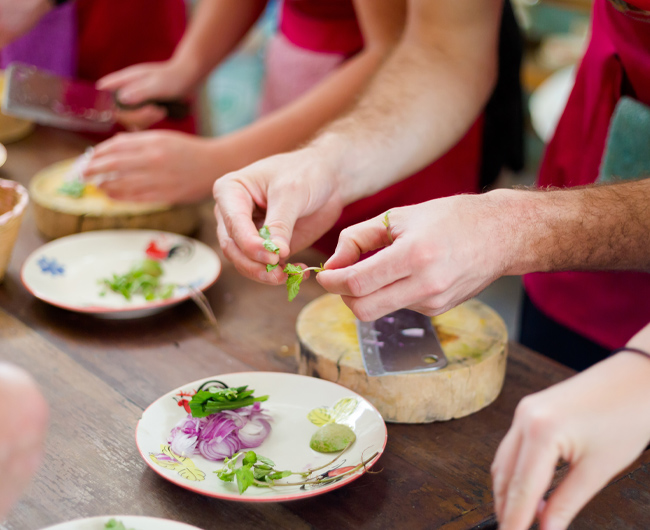
Cooking up a storm in one of Siem Reap’s cooking classes
Cooking classes are commonplace in countries with well renowned cuisines. Thailand, Vietnam and India offer countless opportunities to learn the technique behind mastering some of the local staples, but finding such an offer throughout most of Cambodia may not prove so easy. Siem Reap is an exception to the rule. There is something extra satisfying about learning recipes that are relatively unknown to most, but prove just as delicious as most Asian staples. Not many people can rustle up a genuine chicken amok with much ease.
As with most cookery courses offered across Asia, they tend to begin with a tour of local markets to pick out ingredients for your upcoming lesson. This stage also helps with understanding the requirements that your ingredients should meet in order to perfectly accompany your dish. Teachers are always local chefs who know how to make the homeliest of Cambodian classics and are keen to pass their lifetime of knowledge onto you as best they can.
If you wish to include a cookery course in a Tailor-made Tour to Cambodia then contact our Tailor-made Team and ask for it to be incorporated into your personalised itinerary.
Cambodia Blogs
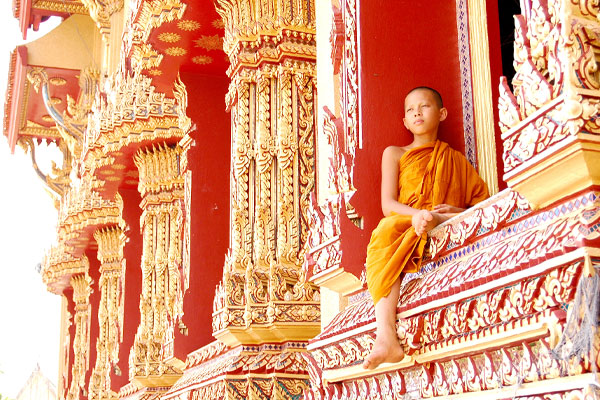
Why Cambodia is more than just Angkor Wat
What is there to do in Cambodia, you might ask? Sandwiched between Vietnam and Thailand, Cambodia is often seen as a short stopover to tick off Angkor Wat – the most well known landmark in the country. With a turbulent past and long history, Cambodia has a lot to offer those who are willing to dig deeper and escape the crowds of Angkor. We believe it’s about time Cambodia got the attention it deserved! There are plenty of highlights in Cambodia to keep any avid traveller occupied for weeks. Keep reading to find out why this gem of Southeast Asia is more than just the temple of Angkor Wat.
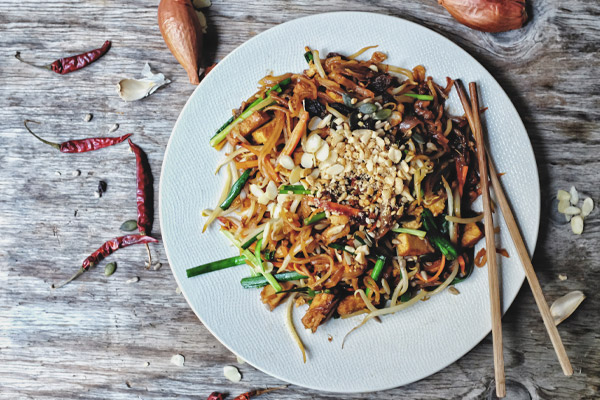
Why Southeast Asia is the ultimate vegan travel destination
Southeast Asia is one of the most popular backpacking destinations for adventurous and budget-friendly travellers. As well as rich cultures, otherworldly landscapes and some of the best beaches in the world, many flock to this corner of the globe for the unforgettable foodie experiences. While the thought of the Southeast Asian food scene might conjure up images of fried insects on sticks, it actually has a multitude of vegan choices, with plant-based cafes and restaurants regularly popping up in the bigger cities. In honour of World Vegan Day on 1st November 2019, we have compiled some inspiration behind why Southeast Asia is the ultimate vegan friendly travel destination.




